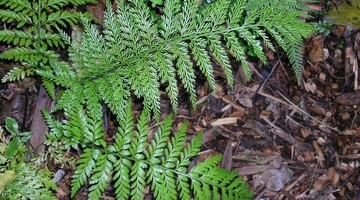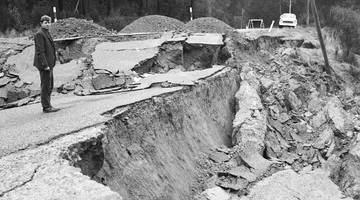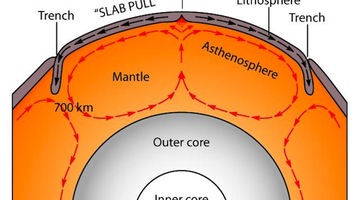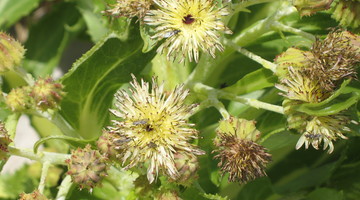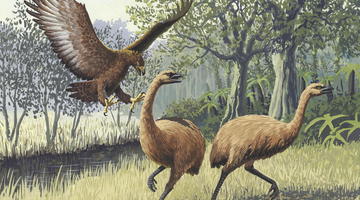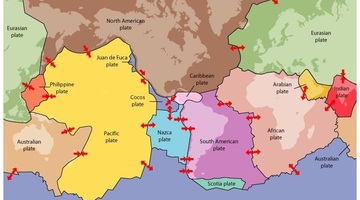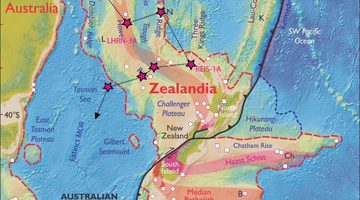This animated video shows the movement of the tectonic plates1 that make up the Earth’s crust2.
Starting 600 million years ago, watch continents3 form and break apart as the plates move. Pangaea the supercontinent, split up at about 220 million years ago into Laurasia and Gondwana4 both of which broke up again. Gondwana which comprised Australia, Antarctica (including New Zealand), India, Africa and South America started breaking up about 150 million years ago. Australia departed from the Antarctica group at around 50 million years and around 35 million years ago South America moved away leaving Antarctica to move towards its current position.
Transcript
600 million years ago, all the land on Earth was part of one supercontinent – Pangaea.
Heat5 from under the crust causes the land to move. Pangaea broke up into Laurasia and Gondwana.
Laurasia formed the northern continents while Gondwana broke up into the southern, including Africa and Australia.
The land continues to move about a centimetre per year. The spaces between continents filled with water, making oceans and seas.
New Zealand was formed by the Australian and Pacific plates sliding together. Where they join is now the Southern Alps.


